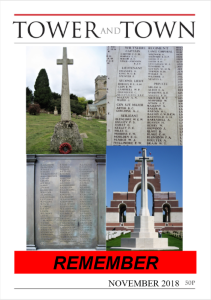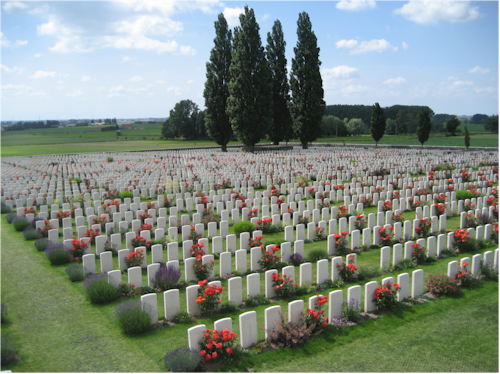

Tower and Town, November 2018 (view the full edition) (view the full edition)WWI: Why So Long, Bloody And Destructive?Most people thought it would be over by Christmas. Surely this little family squabble could be sorted out by a few short sharp battles, a bit of strategic military manoeuvering, some diplomatic deals. After all the most recent conflict between French and German forces back in 1870/71 had lasted just six months, and involved the mobilising of no more than half a million men by both sides. Great power struggles had largely been resolved by distant colonial conflicts or by proxy European wars, such as had been happening in the Balkans. Why should this war be any different? But times had changed and the battlefield had become so much bigger. New weapons of industrialised mass destruction meant an inevitable increase in casualties, and for the first half of the war they were weapons which favoured the defender. Not until significant advances were made in aeroplanes, tanks, and infantry weaponry would the attacker begin to have the advantage, and therefore the opportunity to bring this war to an end. Likewise the tactics employed by commanders in the field had to be completely re-learnt, developed and applied. The mobilisation of huge numbers of trained soldiers, and the ability through railway networks, and by both road and sea, to move these large professional armies around Europe made possible the evolution of continental strategies. More men could now be thrown into battle in more places than had ever been possible before. The scope and size of the conflict meant that a long war with growing numbers of casualties was inevitable. The German Schlieffen Plan of 1914 and the Kaiserschlacht of 1918, just as the British Gallipoli and Palestinian campaigns of 1915 and 1917/18 respectively, are evidence of the far greater scope of strategic possibilities available to commanders. Likewise the ability of governments to mobilise societies and economies for a total war effort meant that countries could sustain a war of this scale of ferocity for longer. Consider for example the production of shells, propaganda and publicity, recruitment and conscription, all of which could now happen on a scale that previously would not have been possible. It is true that both generals and politicians on all sides made mistakes that prolonged the war and increased the casualty toll. It would however be wrong to adopt an "Oh-What-A-Lovely-War" attitude to those in authority between 1914 and 1918 - the generals were certainly not the "incompetent swine" of Sassoon's poetry, but men struggling in unfamiliar circumstances to fulfil their political masters' wishes with inadequate means. And by some twisted paradox, the political leaders found themselves more and more reluctant as the war progressed to contemplate anything but the enemy's unconditional surrender to justify the ever-increasing sacrifice of their countrymen that such a policy perpetuated.  It is easy to stand on the slopes of the Passchendaele ridge amongst the 11,871 headstones of the Tyne Cot cemetery, and to rail against the stupidity and inhumanity of man; but 100 years ago there were no easy solutions or quick conclusions to the complex causes that had sparked this conflict. David Du Croz |